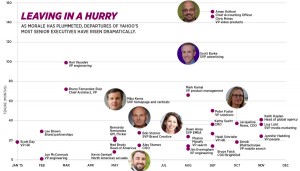When it comes to video content, taking advantage of YouTube is your number one priority. It is the second most visited site in the world and has over two billion monthly active users. And, according to the survey by Wyzowl, 85% of businesses use video as a marketing tool and most of them do it via YouTube.
But, most importantly, YouTube belongs to Google. So, YouTube videos are likely to bypass their competitors from other sites and end up first in Google search results. Of course, Google doesn’t show just any video on its first page. There are some types of queries that Google prefers. For instance, how-to queries:

One more type of queries that Google responds to with the help of videos is reviews:
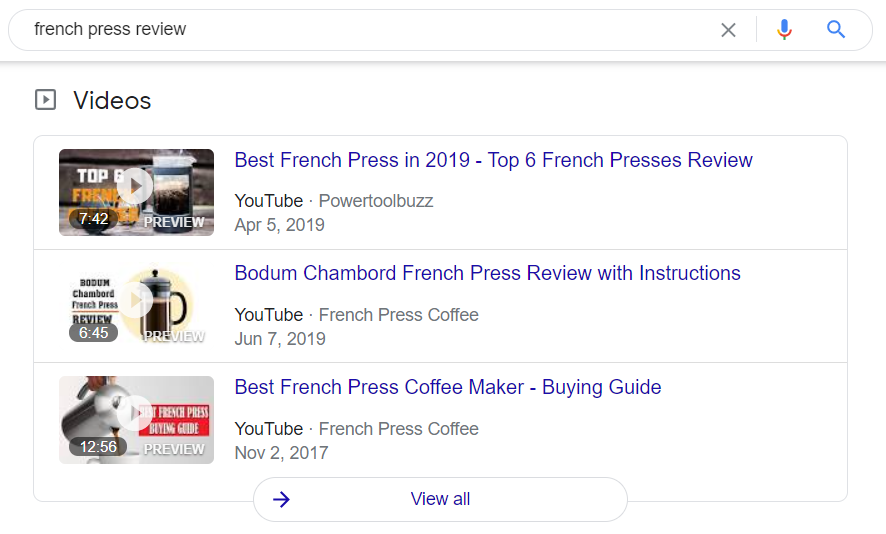
In this article, let’s have a closer look at different factors that can help you improve your YouTube and Google rankings.
1. Find the right keywords.
Keywords can indicate popular topics, thus helping you understand what kind of content you need to aim for. What’s more, using them in your video titles and descriptions can improve your search positions on YouTube and Google.
There are three main approaches to assist you in finding the right keywords:
YouTube and Google autocomplete
You can look at how both YouTube and Google autocomplete your search queries. There you will see the most natural keywords, as they indicate real user queries. Here is how it looks on YouTube:
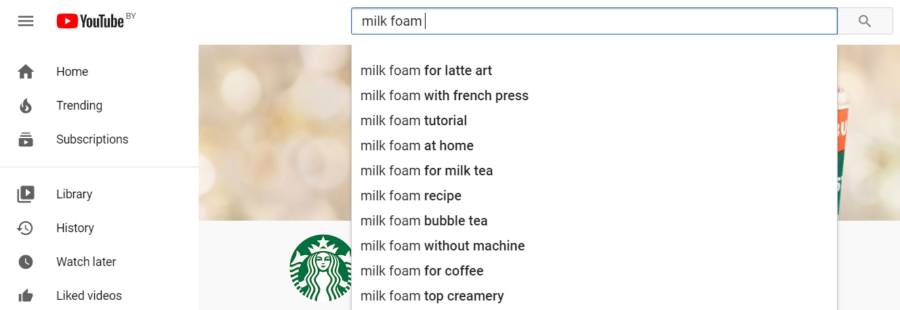
Armed with the list in this screenshot, you can already pinpoint a bunch of popular ideas for your next videos.
Other than that, Google can help you understand the level of competition of any particular keyword. You need to add site:youtube.com to your search query and look at the number of results Google shows. As a rule, the lower this number, the lower the competition:
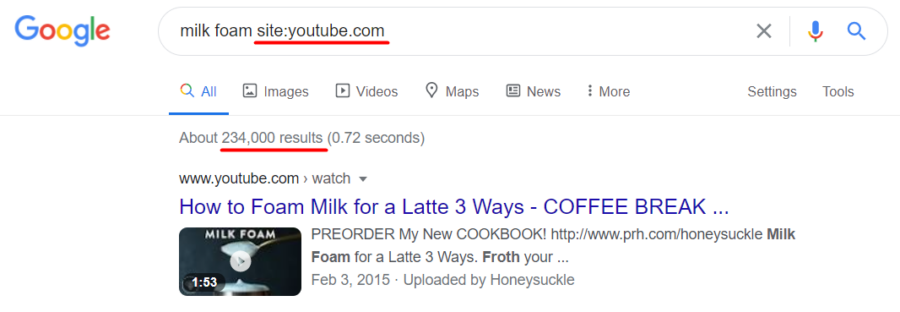
Competitor research
One more well-tried method to choose topics for your videos is to explore other popular channels in your field. Their most-watched videos can be good indicators of effective keywords. You can also sort the videos by popularity not to waste time scrolling through all of them:
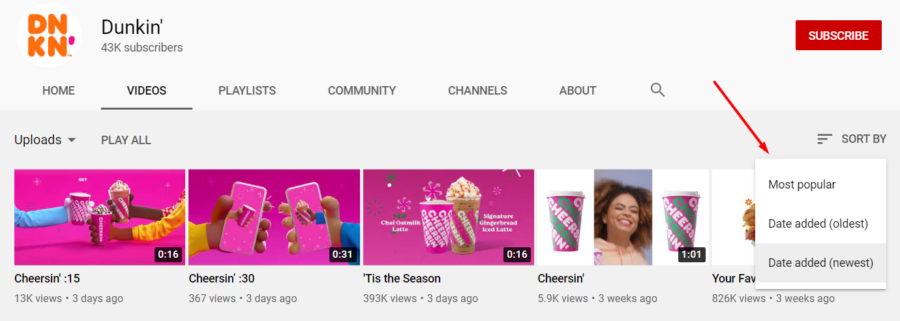
Of course, it’s easier said than done. This kind of manual research takes too much time and effort. However, there is another way to do this faster and in greater detail.
Rank Tracker
One of the tools that can help you carry out thorough keyword research is Rank Tracker. It has nine keyword research methods that can help you get more precise results in no time:
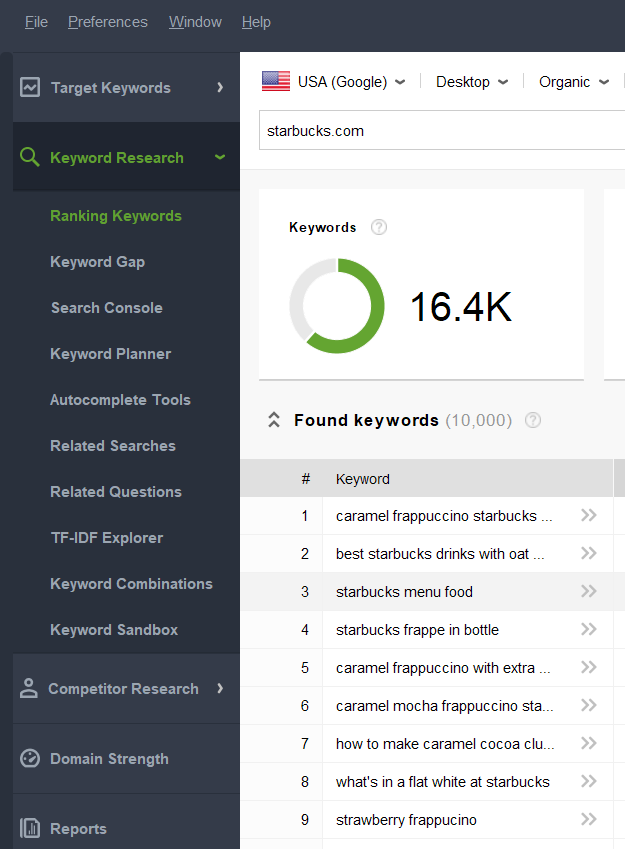
Rank Tracker also comes with a set of filters to help you choose keywords with the highest search volume and the lowest competition.
2. Optimize videos
One of the main goals here is to make users click your videos. As well as show YouTube and Google that your content fulfills a particular search intent. Find it tricky to come up with catchy titles and proper descriptions? Then let’s have a closer look at how you can optimize your videos for search.
Title
Start with adding your main keywords to help your video appear more relevant:
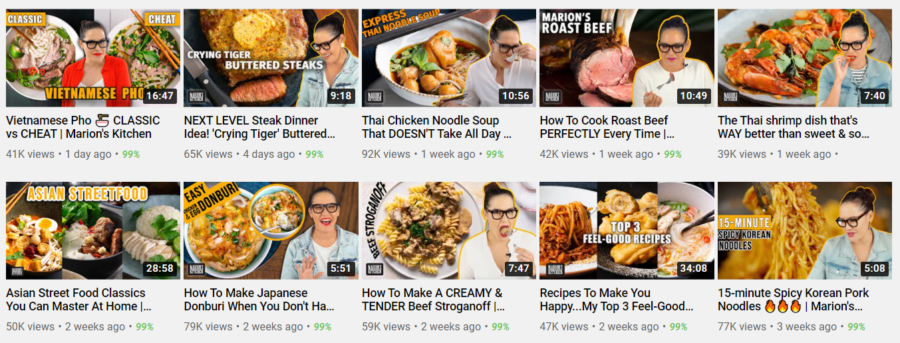
It’s best to use not more than 60 characters, but give a clear picture of your video’s purpose. This way its title will not be awkwardly cut off in the search listing like in the examples below:

Description
Google states that 1,000 characters in your video description is the official limit for YouTube. Start with the first three lines (usually it’s about 100-120 characters) — they are the part of your description that is shown above the fold. Include the most important links and a clear call-to-action within the first lines. Thus giving a reason to click the links or read more in the full description:

Also, unlike keywords in video titles, keywords in descriptions can be long-tail to help your video rank for more specific queries. But keeping context in mind, obviously. Write them naturally instead of randomly dropping within the text. You can also include links to external sources here, for instance, to your site or social networks:
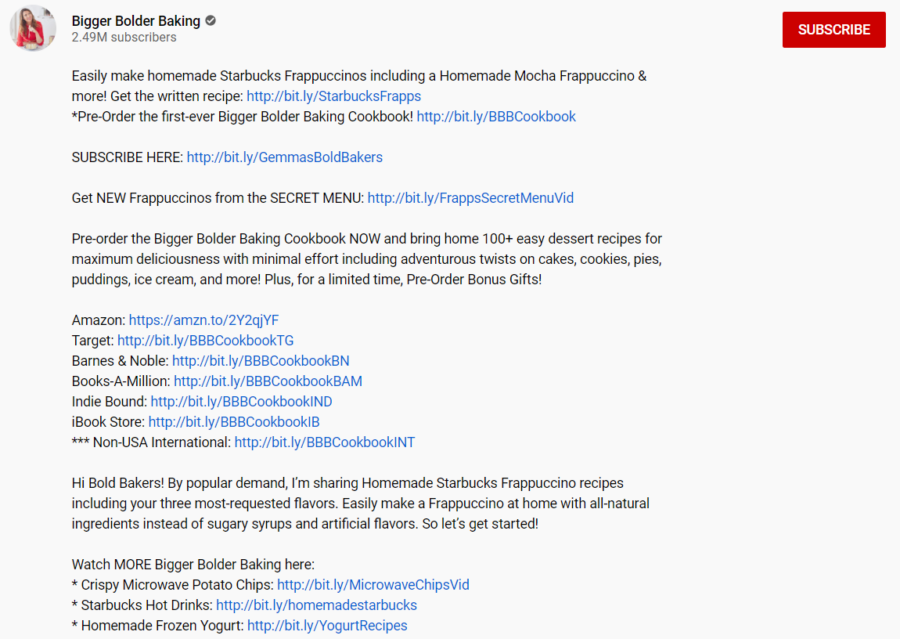
Tags
When you add tags to your videos, you help YouTube categorize them better and recommend your videos to more viewers who are in for this type of content.
To make the most of tags, you can either use the same keywords as in your title and description or go the extra mile and try the ones used in other popular videos. Keeping them relevant is also of high importance here. Google can penalize you for using tags to trick viewers into believing the content is something it is not. So, don’t stuff your videos with too many — choose only the most appropriate tags in this given situation.
Another key thing to remember here is the fact that tags are not displayed to users by default. So, if you want to research tags used by your competitors, you cannot do without some handy extensions. One of them is vidIQ Vision for YouTube for Chrome, which you can install for free. It shows hidden video and channel tags:
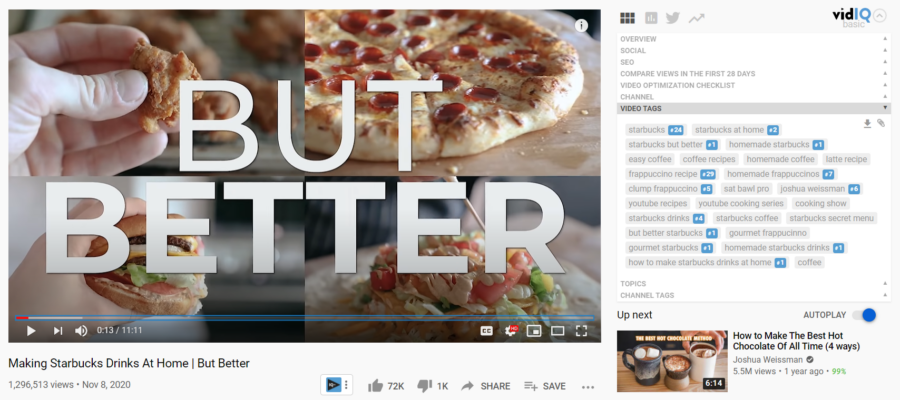
With the help of this extension, you can analyze tags used by your competitors and find the ones that you lack.
Audio
Have you noticed that now Google can tag key moments in videos?
By calling into play its new AI-driven approach, Google analyzes videos previously transcribed by YouTube and automatically finds the segment most relevant to your query:
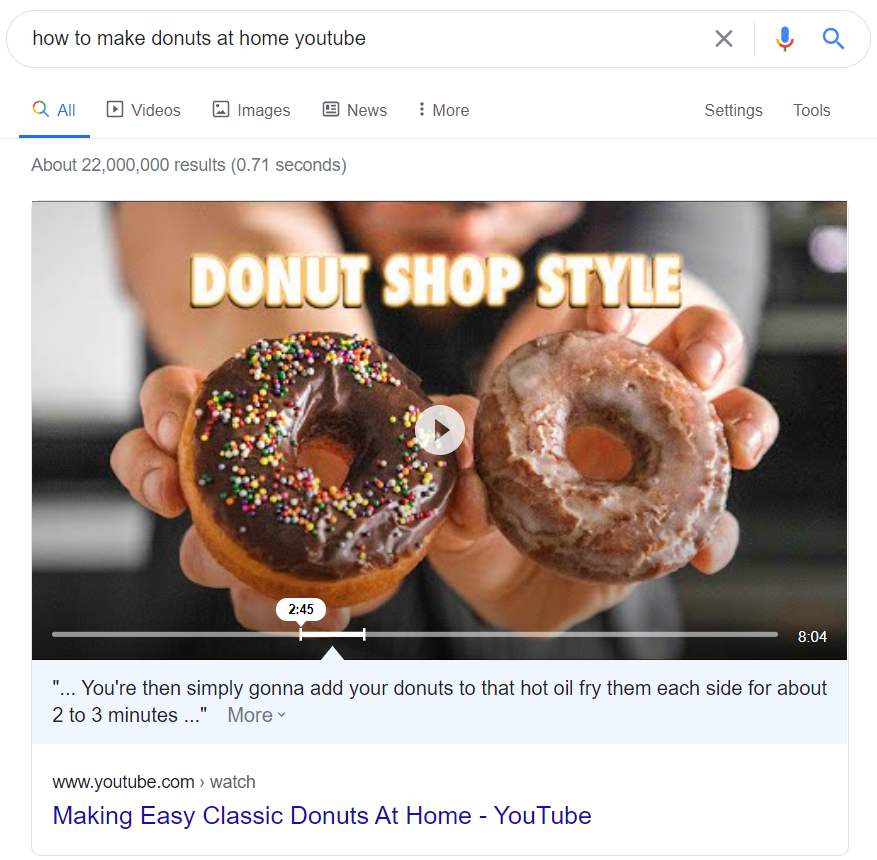
As you see in the screenshot above, now, you can easily get to the part of the video that you need the most. Skipping sections that are not important for you.
Let’s say you are searching for a recipe for home-made donuts, but you are only interested in how to make glaze. If you phrase your query just right, Google will take you to the exact segment of the video where they make glaze.
To take advantage of this feature as a video-maker, make sure you mention all the relevant keywords in your video. This way, Google will be able to pick them up in the transcription and add virtual headings to divide this video into virtual chapters.
To learn the ropes of other important Google updates and adjust to them, you can delve into this article on some new-ish SEO trends.
3. Drive engagement
Don’t forget to work on your engagement metrics as well. If they are high, Google understands that people find what they are searching for in your videos.
There are some natural ways to engage your audience and get recommended for your uploads.
Calls-to-action
Successful YouTubers never disregard this approach. You might have seen them asking viewers to like and comment their videos, and subscribe to their channels. It’s even more likely to work if they take the time to engage with their commenters:

Promotion
One more way you can attract organic viewers is by promoting your videos on all of your social media accounts. For instance, Joshua Weissman with more than three million subscribers. He not only eagerly engages in conversations with his followers but also actively promotes his new videos on all social media platforms.
Take a look at his Instagram:

You can also see a link to his new video in one of his Tweets:
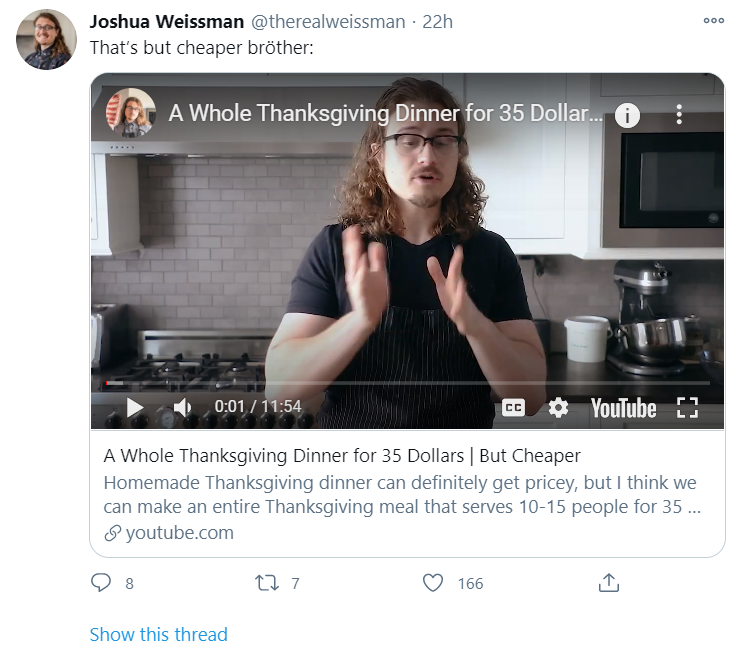
Thumbnails
A thumbnail is the first thing any user sees while looking through the list of videos they might watch. They help users understand the content and decide whether to watch these videos or not. Here is where standing out from your competitors is crucial.
Of course, you need to have a unique style. The one that is easily recognized and consistent with all of your content. A branded thumbnail is also one more way to spread brand awareness and show originality:

Marion’s Kitchen always uses branded thumbnails, thus making it easier to differentiate her videos. As well as giving them extra credibility.
4. Use YouTube analytics
Never underestimate the power of YouTube Analytics and its metrics! This is the final step on your way to understanding your target audience, profitable topics, and video optimization.
When you need to access YouTube Analytics, you can either go to studio.youtube.com and log in from there or go to your YouTube channel and click the YouTube Studio button. On the Analytics page, you can see the data on your channel overall performance:
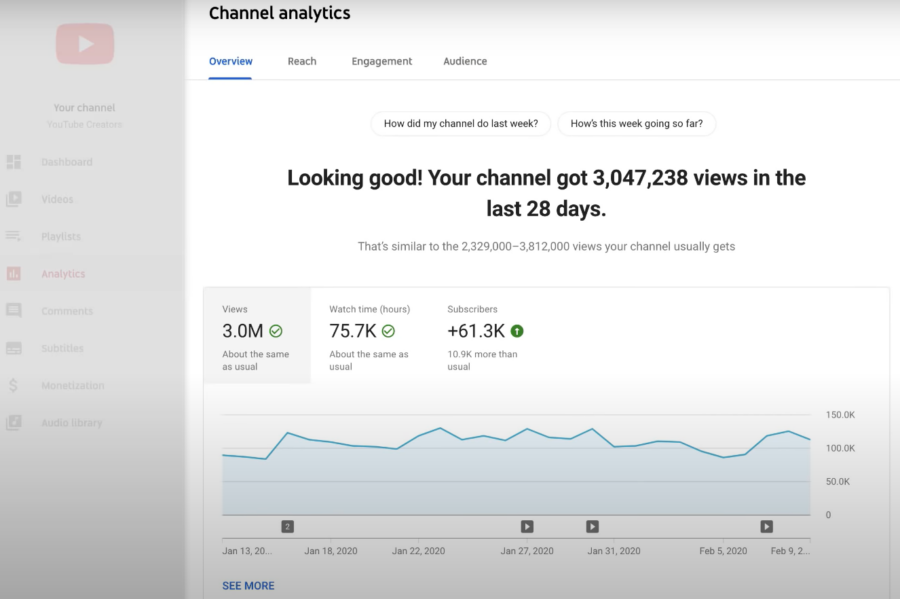
For a better understanding of your performance on YouTube, you can deep-dive into your recent data on a video group or a random video. Choose any metric you are interested in and get more information about it. For instance, check the average view duration of your videos and figure out the optimal length to keep your audience engaged.
Final thoughts
If you don’t forget to follow the updates and latest trends, as well as avoid spamming and disobeying YouTube and Google rules, you will be able to outplay your opponents, improve your rankings, and get more profit for your business.
Digital & Social Articles on Business 2 Community
(68)




